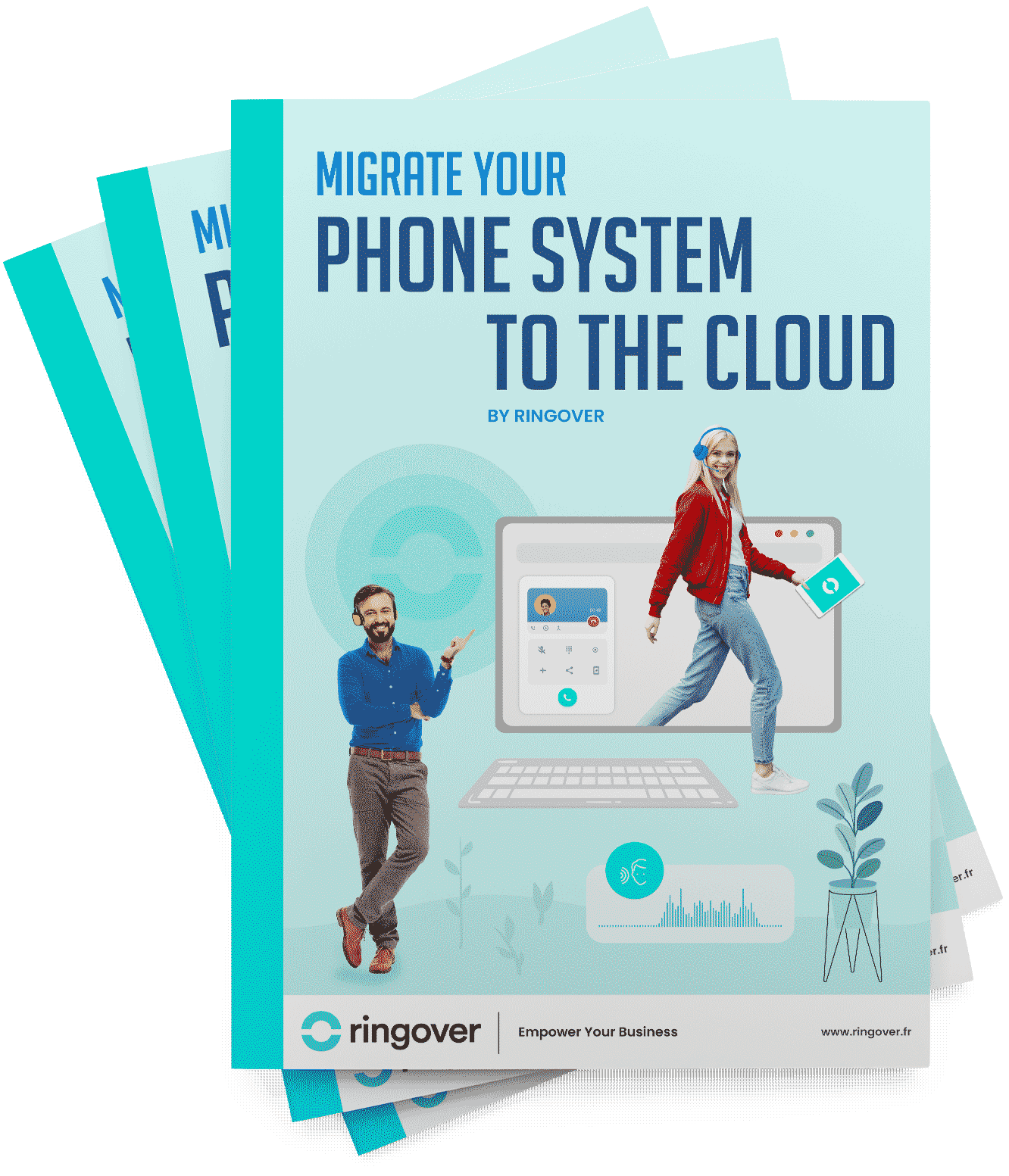Summary
- What is an Omnichannel Platform?
- Why is Omnichannel Communication So Important for Businesses?
- What Are the Business Benefits of an Omnichannel Platform?
- What Are the Challenges of Omnichannel—and How Can You Overcome Them?
- What Are the Best Omnichannel Platforms?
- Take Action with the Right Omnichannel Platform
In a world of expanding communication channels, an omnichannel platform delivers seamless customer experiences. As communication touchpoints multiply, businesses are under growing pressure to ensure consistency in the customer experience—regardless of the channel. An omnichannel platform helps overcome this challenge.
Why is adopting an omnichannel marketing so important in 2025? What challenges does it bring, and how can you successfully address them?
Let's explore the answers together, starting with a clear definition:
What is an Omnichannel Platform?
An omnichannel platform is a technological foundation that brings together all the communication channels a company offers its customers—such as websites, mobile apps, instant messaging, email, calls, SMS, and physical points of sale.
By nature, omnichannel communication goes beyond simply offering multiple channels. These channels must be interconnected to provide continuity, so the customer doesn't have to start over or repeat themselves when switching from one touchpoint to another.
With an omnichannel platform, the goal is to unify the experience from both the customer's and the company's perspectives.
For customer service teams, this means a consolidated view of all conversations, reducing redundancies and inconsistencies. It's far easier and more efficient for agents to work within a centralized system than to switch between different tools.
Sales and marketing teams can better coordinate their efforts, while field operations benefit from improved information flow and reduced silos.
Why is Omnichannel Communication So Important for Businesses?
In a world where customer expectations evolve as rapidly as communication channels themselves, companies must move beyond “fragmented” approaches. Omnichannel contact center software has become a necessity.
Meeting Customer Expectations
Offering multiple touchpoints isn't just about being everywhere—it's about delivering context-aware, channel-appropriate, and user-centric interactions.
This ability to engage across channels—without disruption or repetition—encourages smoother, more natural engagement. The brand meets the customer where they are—not the other way around.
This has a direct impact on perceived experience quality. When a customer transitions from a digital channel to a physical store (for example, from chat to in-person visit), they expect seamless continuity. They want consistent information and immediate recognition of their previous interactions. When executed well, this builds lasting trust.
Why Omnichannel is Crucial for Customer Service
On the customer support side, the benefits are equally significant. Centralizing communication and streamlining information flow across channels saves valuable time for support teams.
It reduces friction, eliminates unnecessary back-and-forth, and improves response times. Customers experience more attentive and effective service, which boosts loyalty.
Beyond that, omnichannel creates operational intelligence. By cross-referencing data from every channel, businesses can better understand their customers, anticipate needs, personalize messages, and fine-tune their offers. What was once limited to luxury retail—“clienteling”—is now becoming a daily standard.
Streamlining Internal Processes
This strategy doesn't just support customer relationships—it also strengthens internal workflows. By harmonizing flows (orders, logistics, inventory), businesses gain greater visibility over their entire operation. The result: improved planning, cost savings, and more agile teams.
What Are the Business Benefits of an Omnichannel Platform?
As mentioned earlier, adopting an omnichannel platform lays the foundation for a more coherent, responsive business ecosystem that can evolve with customer behaviors. Here are the key advantages:
Expanding Sales Reach
Omnichannel solutions directly contribute to business growth by making products and services available across multiple platforms like e-commerce sites, physical stores, social media, and mobile apps. This approach targets a variety of customer segments in different contexts.
During the pandemic, many brands discovered firsthand how vital online channels were in maintaining sales. A solid omnichannel strategy became a growth engine when foot traffic was unpredictable.
Enhancing the Customer Journey
A well-deployed platform also improves the shopping experience by eliminating common pain points. What starts on mobile—browsing or chatting with a virtual assistant—can continue in-store. Online purchases can be picked up in-store or delivered to the customer's home.
The key is perceived simplicity. Customers don't care how your systems work—they just expect the experience to feel smooth. It's that consistency that builds brand attachment.
Boosting Conversion and Loyalty
A well-designed omnichannel platform is a cross-functional driver: it fuels sales, improves service quality, and enables better adaptation to changing conditions. It enhances not only your sales channels but your entire brand perception.
Benefits include:
- Lower cart abandonment rates
- Higher conversion rates
- Increased customer loyalty
These gains, when combined, strengthen your sales strategy.
What Are the Challenges of Omnichannel—and How Can You Overcome Them?
Adopting an omnichannel strategy isn't just a technical project. Behind the smooth experience lies a complex set of mechanisms every company—regardless of size—must master to reap real benefits.
Aligning Communication Channels
One often overlooked challenge is channel consistency. What you say, show, or promise in one channel must match every other. A reassuring email should not be undermined by a vague customer service response.
Aligning tools with vastly different logics—social media, telephony, websites, instant messaging, AI chatbots—requires more than just technical connections. It demands a unified vision of messaging, tone, and priorities, as well as the ability to respond consistently across all scenarios.
Coordination and Resources
An effective omnichannel strategy hinges on coordination between departments. Yet in many companies, marketing, sales, and support still operate in silos.
Building bridges between teams requires discipline and a strong willingness to change work habits. It's not just about tools—omnichannel success depends on cross-functional collaboration and skills.
Centralizing Customer Data
Another key challenge is data centralization. As touchpoints multiply, so does customer information. Unfortunately, this data often ends up scattered across incompatible systems.
But omnichannel strategies depend on the ability to aggregate this data to gain a comprehensive, actionable customer view. Without this, personalization efforts fall flat.
Real-Time Responsiveness
In a world where everything is a click away, delays are seen as failures. Instant response has become the default expectation.
To meet this demand, businesses must use systems that can capture, centralize, and analyze signals in real time.
This is where AI and advanced CRM solutions become essential—helping anticipate customer needs, smart routing, and smart prioritization.
Still, speed alone isn't enough. These technologies must be tightly integrated into a coherent ecosystem. A high-performing chatbot poorly connected to human support can hurt more than it helps. Speed matters—but not at the expense of relevance.
Marketing Automation
Platforms like HubSpot allow brands to launch personalized, large-scale conversations without sounding robotic. Smart segmentation, behavior-based messaging, and coordinated campaigns are all possible—if you have clean data and a clear strategy.
However, automation doesn't mean outsourcing the customer relationship entirely to machines. Message tone, timing, and context still require a human touch.
What Are the Best Omnichannel Platforms?
Choosing the right omnichannel platform is a strategic move. It's not just about tech features—it's about real-world execution: how well the platform connects your channels, facilitates interaction, and supports both team and customer needs. Here are a few standout solutions:
Ringover and Its Dedicated Add-on

Ringover is best known for its cloud-based telephony and team collaboration tools. With its omnichannel add-on and integrations (CRM, ticketing tools, messaging platforms), Ringover easily fits into a modern omnichannel infrastructure. It allows businesses to centralize communications, streamline operations, and improve responsiveness—all from a single platform.
The goal is to centralize phone calls, Google reviews, emails, SMS, and instant messages within a single interface, while syncing data with the business tools already in use.
This approach helps build a consistent ecosystem without requiring a complete overhaul of your existing systems.
Ringover acts as a central hub—a convergence point for customer interactions—empowering proactive and productive teams.
Freshdesk
Freshdesk has become a well-regarded alternative in the world of customer support tools. Its promise? To offer a clear, well-designed platform capable of managing incoming requests across multiple channels—email, social media, phone calls, or live chat.
Its simple interface doesn't compromise on essentials: ticket management is seamless, automation is well-integrated, and the tool adapts easily to collaborative use.
Ringover integrates with Freshdesk!🔌Save your teams valuable time by eliminating manual, repetitive tasks.
Zendesk
Zendesk stands out as one of the most robust platforms for omnichannel management.
Its architecture is designed for complex environments, enabling centralized communication across a wide range of channels—while also providing easy access to powerful analytics and decision-making dashboards.
What sets Zendesk apart is its ability to turn customer interactions into strategic assets. It goes beyond basic ticket tracking by adding context to conversations, detecting trends, and helping teams better anticipate customer needs.
Ringover integrates with Zendesk!🔌Stop wasting time on ticket creation and call log entries.
Take Action with the Right Omnichannel Platform
Adopting an omnichannel platform today is a practical move—one that aligns customer interactions with your company's operational demands.
The benefits aren't just about efficiency. They also shape how customers perceive your responsiveness, organization, and overall professionalism.
Implementing an omnichannel platform requires asking the right questions upfront, assessing compatibility with your existing systems, and considering the needs of both field teams and headquarters.
That's exactly how we approach things at Ringover. Every day, we support companies of all sizes, often undergoing major transformations.
What do they all have in common? A clear need for reliable, scalable tools that are easy to implement. Our solutions are built to adapt to real-world workflows and make life easier for those who use them.
👉 Book a meeting with a Ringover advisor or start a free trial today to experience the full potential of a unified, high-performing customer relationship.
Published on July 21, 2025.



